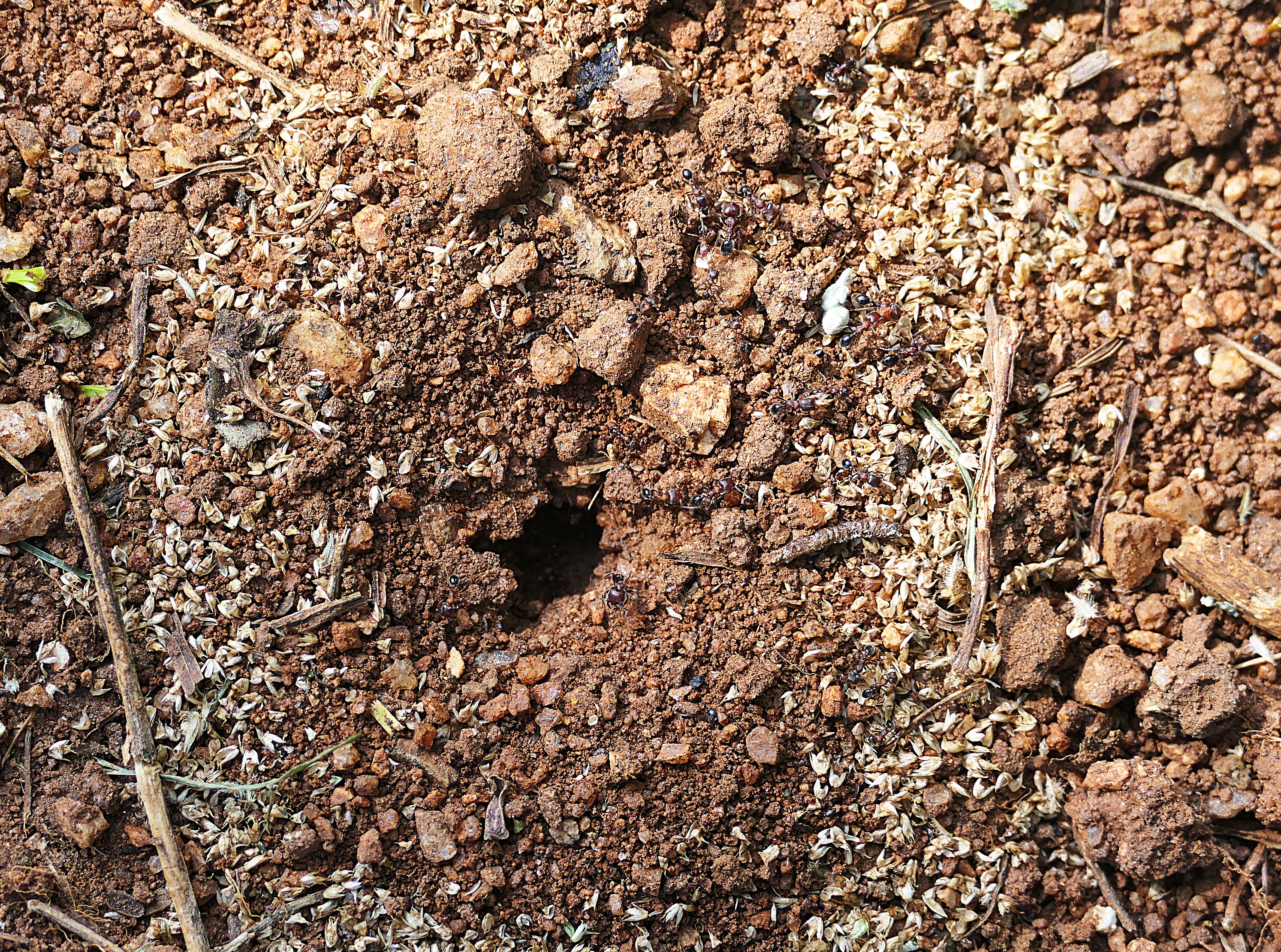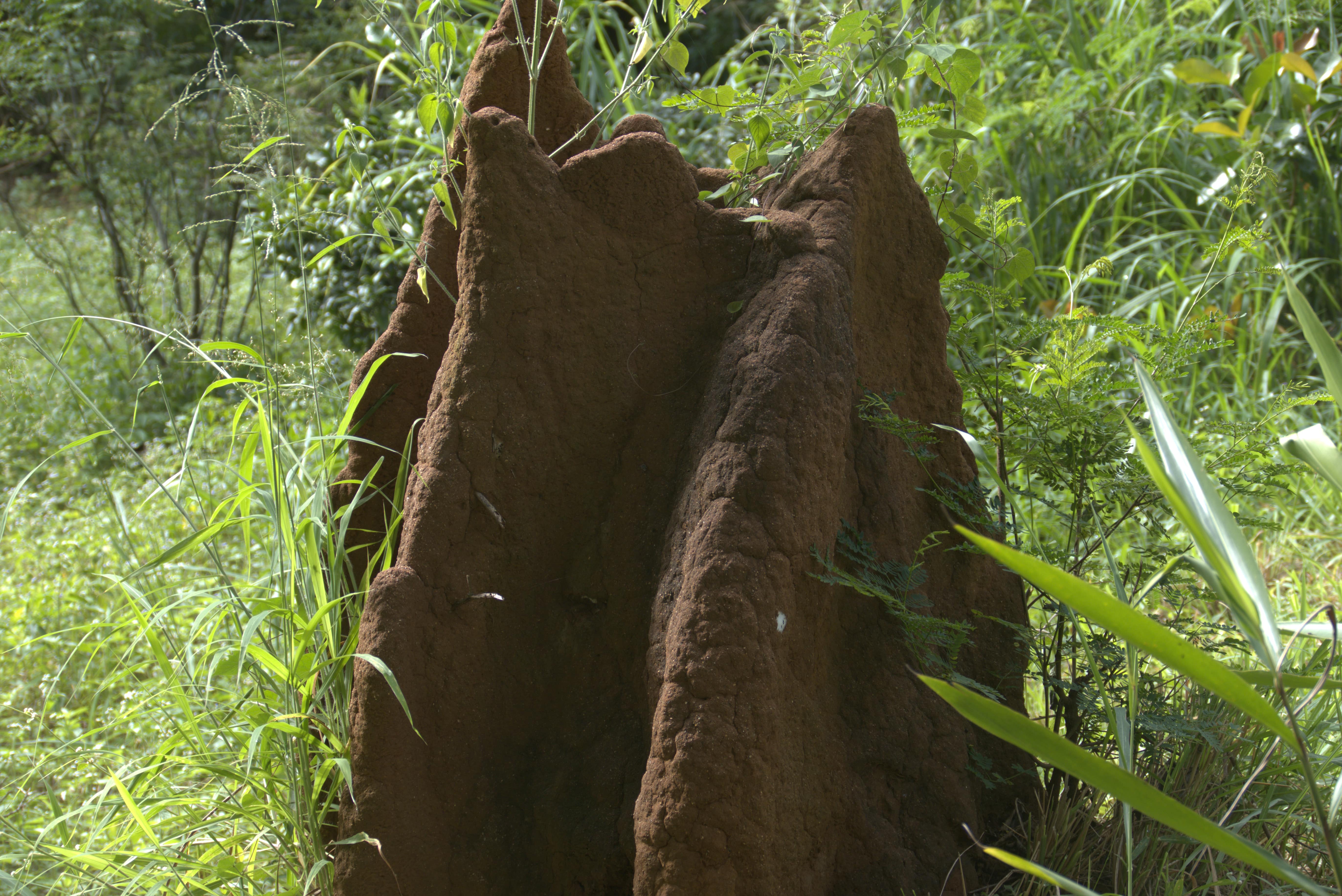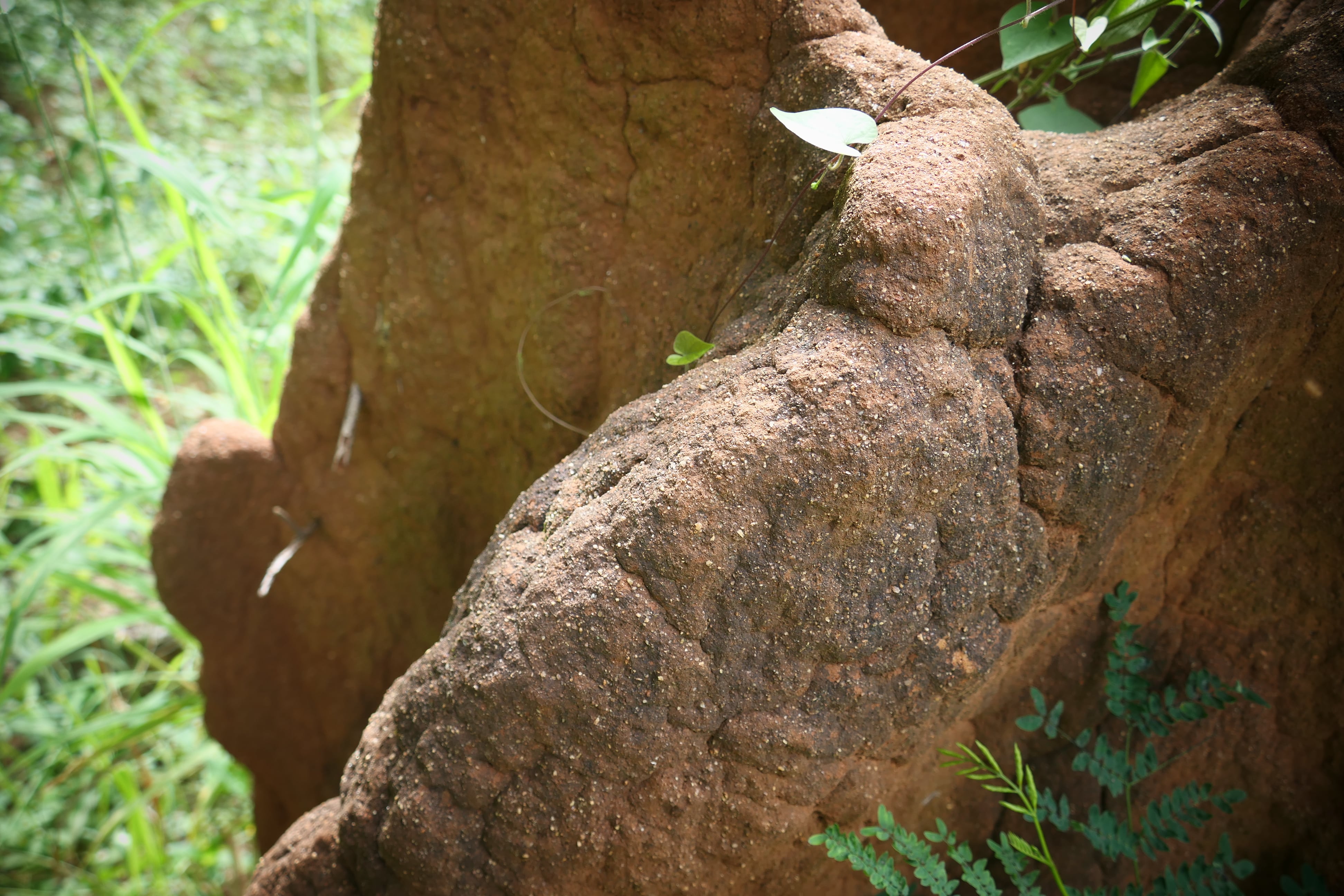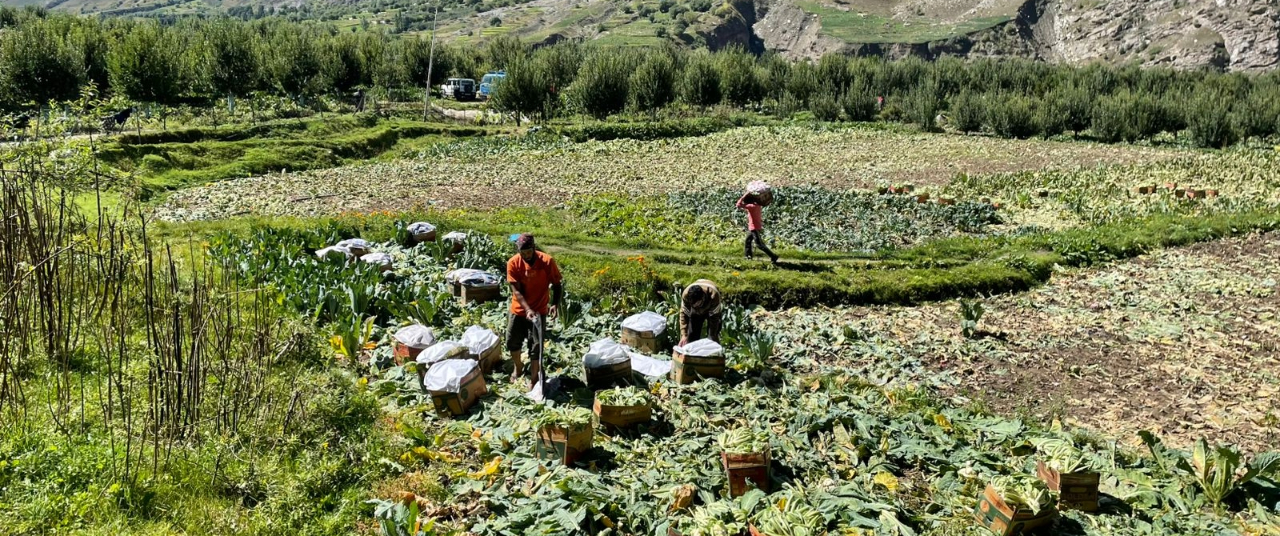From earthworms to dung beetles, the agricultural landscape and its thriving soil features a diverse set of agents






Editor’s note: To know Rama Ranee is to learn about the power of regenerative practices. The yoga therapist, author and biodynamic farmer spent three decades restoring land in Karnataka, envisioning it as a forest farm in harmony with nature. In ‘The Anemane Dispatch’, a monthly column, she shares tales from the fields, reflections on the realities of farming in an unusual terrain, and stories about local ecology gathered through observation, bird watching—and being.
A freshly dug up mud bank where wild pigs foraged for tubers on their nightly jaunts; burrows under the compost heap where a slinking mongoose sought earthworms; the barely perceptible rustling under a heap of fallen leaves and the scurry of tiny roaches and millipedes—all of it makes the soil what it is, a matrix where substance and processes are indistinguishable.
Living soil is a complex world of decomposed organic matter, a host of micro- and macro-organisms, bacteria, fungi, nematodes (a free-living worm of the phylum Nematoda), worms, insects and rhizosphere (the volume of soil in proximity to root segments). This dynamic universe is brought alive by their interactions. Occasionally, if we choose to lower our gaze, terra firma’s curtains rise, revealing actors who—for the most time—remain backstage, or to be precise, underground.
Also read: Farming under the elephant's nose: Lessons in crop choices
The Dung Beetle’s Sisyphean endeavours
A large snail shell tottered down a slight slope, almost as if it had a life of its own. That it was a perfectly empty shell devoid of all signs of life was intriguing. It must have belonged to a long dead Giant African Snail but was now being repurposed by an ingenious Dung Beetle. The shell was two inches big, and the beetle less than one-fourth its size, explaining the struggle to get it across to I-don’t-know-where; half-dragging, half-pushing into a semi-roll, in a heroic effort.
After a lapse of 15 minutes, the bug and the snail shell had made foot-long progress, and this time, the direction had changed. Instead of down the slope, it was up! When I came back to the spot after an hour the project had been abandoned, the shell lying by the wayside, unclaimed.
Dung Beetles are a treat to watch. When they find fresh cow dung, they roll bits of it away towards their nests in tunnels as brood balls, where eggs are laid and young ones raised. The adults feed on the moist, nutrient-rich contents, while the larvae hatch and feed on the fibrous residue, ingesting the coarse, undigested plant material populated with bacteria and fungi. Elephant dung, too, is much coveted by these beetles.
Dung Beetles are a treat to watch. When they find fresh cow dung, they roll bits of it away towards their nests in tunnels as brood balls, where eggs are laid and young ones raised.
It is evident that Dung Beetles contribute to the health of the soil as primary decomposers—recycling nutrients, improving soil structure and water retention. Their tunneling aids aeration and water percolation. By consuming fresh dung efficiently, they prevent pests like dung flies from multiplying, a natural pest control measure. Another important role is that of secondary seed dispersers; they bury seeds and save them.
On the ant trail
I have acquired a perpetual crick in the neck while walking, as I watch out for ant armies marching in the grass. Tree trunks, bamboo clumps, leafy branches, stems of plants, in the ground, and of course, in the kitchen—they are everywhere. These ubiquitous beings have a deep connection with the soil; those who dwell in it are essential shapers of its quality and health.
Recently when the sun shone bright, after a rainy spell, little Black Ants were tunnelling, lifting granules of grit, and placing them precisely around the periphery. Another team of ants garnered seeds of amaranth from the ground—remnants of a harvest. After a while, a mound grew with a fine lining of amaranth seed hull discarded from the tunnel. The tiny seeds had been expertly hulled and stored away for the future. No wonder Black Ants are revered by our farming community.
Marvelling at the ants, farmhand Rajappa shared a story as narrated by his father: there was once a terrible drought where farmers lost all their crops. Even the hardiest ragi withered in the fields. Finally, when the clouds gathered and the rains came pouring down, the farmers tilled their fields. To their utter dismay, no one had a grain of ragi to sow! Despair turned to wonder when armies of black ants emerged from their tunnels with perfectly preserved grains and heaped them onto the fields, for the farmers to sow. Since that day, they are revered as farmers’ saviours with offerings of rice. Every morning, Nagarajappa—our cattle vaidya can be seen making his offerings to the Black Ant.
Their presence in the soil is beneficial in many ways, from the control of potential insect pests like beetle grubs and termite larvae by predation, to inhibiting pathogens by scavenging dead organic matter including carcasses and fruits.
The industriousness of Little Black Ants (Monomorium minimum) is upheld as an example to impressionable young children through fables like Aesop’s The Ant and the Grasshopper. Their foraging behaviour is ecologically significant, contributing to the dispersal of seeds of wild plants. We have found that the propagation of most wild edible greens is best left to nature, but how these delicate seeds endured harsh weather was a mystery. We apparently owe their survival to the Little Black Ant!

A decade ago, before the ground became a mantle of grass, ant columns and nests were visible. The lemon trees were beginning to bloom, but the floor in the interspaces was bare and dry. As if marking the centre was a neat, elevated mound of tiny pebbles and feathers belonging to slender greyish ants in a subterranean nest. I had, in all probability, come upon the nest of the Sri Lanka queenless ant (Diacamma ceylonense), common to our island neighbour and south India.
The Bannerghatta National Park with its deciduous forests, where the Anemane Farm is located, is home to this soil-dwelling ant specie known to use feathers around its nest. The feathers are a decoration with a purpose: to trap dew for water supply, as a camouflage to conceal the entrance, and as a protective barrier from predators.
Their presence in the soil is beneficial in many ways, from the control of potential insect pests like beetle grubs and termite larvae by predation, to inhibiting pathogens by scavenging dead organic matter including carcasses and fruits.
Though two species are mentioned here, there are several others whose identity I cannot establish. A study of the adjoining area indicates a significant diversity. The ecological importance of soil-dwelling ants is immense:
· Balancing insect populations, which are potential pests, ensures soil health
· Their antimicrobial secretions inhibit soil pathogens, maintaining a hygienic environment around the nest
· Their tunnels are repositories of nutrient-rich organic material which, upon decomposing, enriches the soil
· The constant moving and mixing of soil particles from different depths improves soil texture and fertility
· The underground galleries create pockets which aid aeration and water drainage
· Seed dispersal occurs through mutualism (myrmecochory, or a seed carrying partnership) between the plant and ant
· Seeds with nutrient-rich structures (elaiosomes) that are an attractive food source, are collected. After consuming the protein-rich, fleshy parts, the seeds are disposed in nutrient-rich soil where they may germinate.

Also read: How birds open a window to the shared web of life: our ecosystem
The resilient cathedrals of termites
Often dreaded for their uncanny ability to find and destroy wood or anything else with cellulose, termites are both, a threat and a blessing, depending on the situation and whether we are in the thick of it ourselves. Not merely trees or vegetation, but even human habitation—especially mud-plastered walls, wooden beams, any ‘untreated’ wooden surfaces, fabric, and paper—is under risk in some environments.
The redeeming fact is that termites are attracted to dead or decaying wood, including trees affected by decay fungi. A healthy tree may stand untouched and unaffected amid termite infestation. A tree may be stripped off its decayed bark, dead limbs and heartwood and continue to thrive, if part of the sapwood and cambium—the living tissues—are intact, as has been the case with one of our citrus and Jamun trees. Recycling nutrients through the decomposition of lignin, one of the toughest natural materials to breakdown, is a vital ecological service provided by termites. As ecosystem engineers, they create fertile islands of enriched soil by digesting and redepositing soil particles combined with decomposed organic debris. Termite ‘reconstituted’ soil is rich in organic carbon, nitrogen, and phosphorus.

Subterranean termites which build cathedral-like mounds (species of Termitidae) shape soil hydrology. The mounds are connected by a labyrinth of underground tunnels and complex galleries, creating spaces that aid the percolation of water. Traditionally, mound sites were considered as indicators of potential water sources, but exploitation of deep aquifers may have disturbed the balance, rendering this knowledge redundant, a hydrologist informed us while divining (locating groundwater). Despite these human-led disturbances, the insects continue to act in their inimitable way as trusted agents of nature. Mounds are located above water sources as these insects regulate humidity and temperature within the mound to maintain ideal conditions. During the dry season, they transport water from deeper levels reaching the water table.
It is amazing to see how quickly a damaged tower is repaired! Cattle and elephants often enjoy butting against the mound, knocking down parts of the tower. One would expect the mound to be abandoned gauging from the apparent lack of activity. Yet, the following day the tower stands, damage repaired, the damp earth being the only sign that the inhabitants are alert. When a mound is neglected for more than a few days, we can be certain that it has been abandoned.
With its rigid walls, the mound is a masterpiece of architecture that meets its every need—the outer mantle, central nest with nursery rooms, fungal ‘garden’ and royal cell for the queen, and an elaborate system of tunnels and chambers. It is ingenious, not merely due the intricate design and structure, but also for its built-in temperature and humidity regulation. It is a castle that breathes and ventilates naturally, influencing the soil micro-climate in the immediate vicinity.

Just after May showers, we scan the base of mounds hoping for a harvest of the large, satin-smooth Termite mushroom, a specie of Termitomyces. Thick and fleshy with a distinct aroma, these mushrooms make for the best curry we have ever eaten. The mutualism between Termitomyces, farmed in fungal greenhouses as in-house food resource, and termites is a boon as it enhances nutrient concentration in the surrounding soil. The ecological impact of termite activity involving physical, chemical, and biological processes makes them partners in the restoration of degraded lands. Their towers dotting the landscape are a part of our story, too.
It is a castle that breathes and ventilates naturally, influencing the soil micro-climate in the immediate vicinity.
Also read: What it takes to breathe life into degraded farmland
With a little help from worm friends
Coiled pellets of soft earth tell tales of earthworms living their lives, weaving through the layers of soil and biomass. The earthworm is the proverbial ‘friend of the farmer.’ There are several ‘friends;’ species which are not so easy to identify, considering they are confined to the deep mineral layers and are seen only when we dig deep. The two most familiar ones are the horizontal burrowers that live in the soil (endogenic), whose castings I find on the vegetable beds or in the basins of fruit trees, and the composters in the vermicompost pits that live in the top organically-rich layers (epigeic).
The earthworm is the proverbial ‘friend of the farmer.’
While they burrow, endogenic earthworms draw dead organic matter such as leaf litter into the soil, feeding on organic matter, soil and on decayed plant roots. They make the farmer’s task easier by improving tilth and fertility, soil structure, aeration, drainage, and aggregation, increasing the capacity to hold moisture—conditions ideal for plants to put down healthy roots. Organic waste and fine soil passing through the gut as castings are rich in enzymes that break down organic matter, act as pest protection, and provide natural hormones conducive for growth. Leaf composts such as biodynamic mixed leaf composts and mulches are effective ways to attract these earthworms. In a sense, they are in-situ composters!

Epigeic earthworms such as the African nightcrawler (Eudrilus eugeniae)—the ones used to make vermicompost—convert animal dung and biomass into a fine silky, smooth substance; a component of humus, deposited on the surface of the compost. They are voracious feeders with a ‘sweet tooth.’ A weak solution of jaggery or a sprinkling of Panchgavya over the layers of biomass and cow dung is an elixir that seems to whip up their appetite.
Both are invaluable for agriculture, but the main difference is that the castings of endogenic worms are mineral-rich, and the vermicompost produced by epigeic worms is rich in plant nutrients: macronutrients such as nitrogen, phosphorus, potassium, calcium as well as micronutrients. While root vegetables thrive in beds populated by burrowers, leafy green vegetables and heavy feeders like cucurbits do well with applications of vermicompost.
Networks of support
An agricultural landscape is far more diverse than what is generally construed. I imagine the support system to be an upside-down triangle with the base up, the farmer being right at the bottom. Good practices, whether it is composting, mulching, or crop rotation, are beneficial because they support insects, worms, and other macro-organisms which, in turn, act upon these substances to create a beneficial environment for the real agents in the vibrant, multifarious realm of the soil microbiome. These unseen soil microbiota deliver what plants need: nutrients in an absorbable manner, protection from disease, stimulation of growth processes and a support network.
When we welcomed the wilderness into our agriculture space, the lines blurred. What we experience today is not the controlled environment of a farm, but a loosely structured farm-wilderness where the farmer has a limited role—the one she shares with fellow creatures.
What we experience today is not the controlled environment of a farm, but a loosely structured farm-wilderness where the farmer has a limited role—the one she shares with fellow creatures.
Artwork by Khyati K
{{quiz}}
Explore other topics
References


.png)

.jpg)

.avif)




